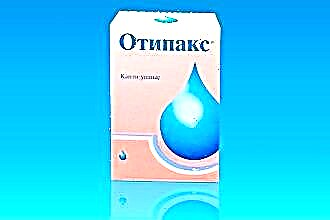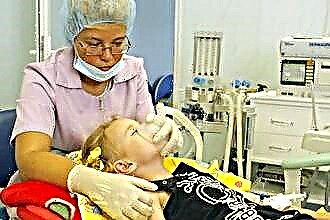In what cases is a dropper with aminophylline prescribed?
Parenteral administration of aminophylline is indicated in cases of:
- Relief of status asthmaticus, reversible bronchospasms of various etiologies, pulmonary emphysema;
- Pulmonary hypertension, as a component of the complex therapy of "emphysematous heart";
- Combinations of cardiac asthma and bronchospasm, respiratory disorders of the central genesis;
- Relief of cerebral vegetative-vascular crises against the background of cerebral atherosclerosis;
- In the treatment of cerebral blood flow insufficiency, cerebral edema, osteochondrosis of the cervical spine;
- Intensive therapy of ischemic stroke.
Contraindications to the appointment of aminophylline:
- Acute cardiovascular failure;
- Angina pectoris, acute coronary syndrome;
- Severe rhythm disturbances and intracardiac conduction;
- Hemorrhagic stroke, intracerebral hemorrhage;
- Pulmonary edema;
- Peptic ulcer and duodenal ulcer in the acute stage;
- Epilepsy, convulsive syndrome;
- Hormonal pathology of the thyroid gland;
- Multiple organ failure;
- Pregnancy and breastfeeding.
Technique, components of the solution and the frequency of the procedure
Eufillin is administered exclusively intravenously under the supervision of medical personnel!
Instructions for the use of aminophylline for droppers provide for the implementation of certain rules:
- The temperature of the solution should be 370C;
- If possible, enter in the morning (the drug has an exciting effect on the central nervous system);
- It is worth diluting aminophylline only in 0.9% sodium chloride solution;
- It is forbidden to mix the drug in the same bolus syringe.
Prepare the solution immediately before administration. Storage of leftovers and reuse is unacceptable.
When injecting aminophylline, the patient should be in a supine position. It is necessary to control blood pressure, heart rate, respiratory parameters and the general subjective state of the patient. In the case of a quick introduction, an increased heart rate, nausea, and vertigo may occur.
Status asthmaticus. In the case of a serious condition of the patient, it is permissible to administer aminophylline intravenously in a bolus within 5 minutes under the control of blood pressure with a transition to an intravenous drip. Dilute 15 ml of aminophylline solution 2.4% in 200 ml. saline, add 90-120 mg of prednisolone and inject at a rate of 30-50 drops per minute. When the patient's condition is normalized, they are transferred to alternative forms of the drug.
Pulmonary hypertension. Dilute 10-15 ml of 2.4% aminophylline in 150 ml of saline. Enter at a rate of 30-40 drops per minute. The saturation dose is 3 mg / kg / day. With a decrease in systemic pressure, they switch to tablet forms of methylxanthines.
Cerebral vascular crisis. The introduction of aminophylline is combined with papaverine 2-4 ml, beta-blockers (anaprilin 0.25% diluted in 500 ml. 5% glucose).
Ischemic stroke and cerebral edema. 10 ml of a 2.4% solution of aminophylline in 150 ml of saline in combination with dexamethasone, 2.0-4.0 ml of lasix, 10 ml are injected intravenously. 25% magnesium. Additionally, L-lysine escinate is injected 5-10 ml per 100 ml of saline slowly dropwise. This treatment is carried out until clinical improvement.
Osteochondrosis. During periods of exacerbation, it is advisable to prescribe combined droppers with aminophylline, pain relievers (analgin, baralgin), dexamethasone, lasix, papaverine. The course treatment lasts no longer than 7-10 days.
If possible, it is necessary to control the level of potassium and theophylline in the blood serum, do not exceed a daily dose of 10 mg / kg.
During treatment with aminophylline, you should refrain from drinking alcohol, products containing methylxanthine (coffee, cocoa, chocolate, tea).
What effect are expected from taking a dropper?
Effects of parenteral aminophylline:
- Relieves obstruction in patients with bronchial asthma, emphysema;
- Optimizes the functions of the respiratory and intercostal muscles;
- Improves the parameters of respiratory function, blood oxygen saturation, stimulates the respiratory center;
- Balances the rheological parameters of blood, inhibits platelet aggregation;
- Stimulates the activity of the central nervous system, cardiac contractility, increases coronary blood flow;
- Relieves the tone of the walls of blood vessels;
- Reduces perifocal cerebral edema, intracranial pressure;
- Reduces the general resistance of the arteries of the pulmonary circulation;
- Increases renal perfusion, moderately stimulates diuresis;
- Improves microcirculation in cartilage tissue, relieves inflammatory edema.
It is worth remembering the likelihood of side effects:
- Vertigo, migraine, psychomotor agitation, sleep disorder, tremor, convulsive syndrome, insomnia, hallucinations;
- Epigastric discomfort, nausea, gastroesophageal reflux, heartburn, exacerbation of stomach ulcers, diarrhea, anorexia;
- Metabolic imbalance, violation of the acid-base state of the blood;
- Arrhythmias, tachycardia, vascular collapse, exacerbation of angina pectoris, extrasystoles, progression of heart failure;
- Hyperthermia, facial flushing, sweating, shortness of breath.
Conclusions
Eufillin in a dropper is widely used in the treatment of emergency conditions and exacerbation of chronic diseases. Intravenous drip increases bioavailability, allows you to control the rate of drug intake and quickly stop when side effects appear. Long-term parenteral use of aminophylline is not recommended; after stabilization of the patient's condition, they are transferred to alternative dosage forms.



